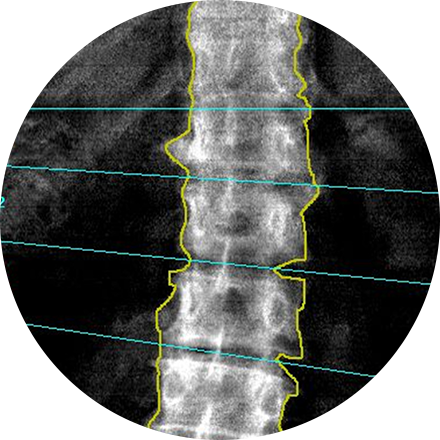
A Bone Density Scan Imaging Center is a medical facility that specializes in diagnosing and monitoring bone health. This non-invasive imaging technology helps to measure bone mineral density, identify osteoporosis, and detect potential fractures. It is an essential tool for assessing the risk of bone fractures and other complications related to bone health.
Heading 1: Why is Bone Density Important?
Bone Density Scan Imaging Center The human body is supported by bones, and as we age, our bones become weaker and prone to fractures. The condition of our bones is influenced by several factors, including genetics, nutrition, lifestyle, and medical history. A bone density scan imaging center plays a vital role in assessing bone health and preventing the development of osteoporosis, a condition that weakens bones and makes them fragile.
Heading 2: Who Needs a Bone Density Scan?
A bone density scan is recommended for individuals at risk of developing osteoporosis. This includes women over 65 years, men over 70 years, individuals with a family history of osteoporosis, those with a history of fractures, smokers, and those who consume excessive alcohol. People who have been on medications that affect bone health, such as corticosteroids, should also consider getting a bone density scan.
Heading 3: How is Bone Density Measured?
A bone density scan imaging center uses a specialized X-ray machine to measure the amount of mineral present in bones. The scan is painless and non-invasive, taking about 10-15 minutes to complete. The results are then compared to a reference database to determine the bone density of the patient. The most commonly used bone density scan is known as dual-energy X-ray absorptiometry (DEXA).
Heading 4: What Do Bone Density Results Mean?
The results of a bone density scan are presented as a T-score. A T-score of -1 or above is considered normal, a T-score between -1 and -2.5 is classified as osteopenia (low bone density), and a T-score of -2.5 or lower indicates osteoporosis. The bone density scan imaging center will provide a report that includes the T-score and other relevant information, such as the risk of fracture and treatment options.
Heading 5: What are the Treatment Options for Osteoporosis?
The treatment for osteoporosis depends on the severity of the condition. Mild osteoporosis may be treated with lifestyle changes such as regular exercise, calcium and vitamin D supplements, and a healthy diet. Moderate to severe osteoporosis may require prescription medication to increase bone density and reduce the risk of fractures. The bone density scan imaging center can refer patients to a specialist who can advise on the best course of treatment.
Heading 6: Conclusion:
A bone density scan imaging center is an essential resource for individuals concerned about their bone health. It is a painless, non-invasive test that provides critical information about bone density, fracture risk, and potential complications related to bone health. By identifying osteoporosis and other bone-related conditions, patients can take steps to improve their bone health and reduce the risk of fractures. It is recommended that individuals at risk of developing osteoporosis, such as postmenopausal women, undergo a bone density scan.
Bone Density Scan Imaging Center How Its Work?
A bone density scan imaging center is a specialized medical facility that uses non-invasive imaging technology to measure bone mineral density, identify osteoporosis, and detect potential fractures. The bone density scan, also known as a bone densitometry or DEXA (dual-energy X-ray absorptiometry) scan, is a painless and non-invasive test that takes about 10-15 minutes to complete.
The bone density scan imaging center uses a specialized X-ray machine to scan the hip and lower spine. The patient lies down on a table, and the machine passes a small amount of radiation through the bones. The machine then measures the amount of radiation that passes through the bones and produces images that show the bone density.
The bone density scan imaging center staff will explain the procedure to the patient and ask about any medications or medical conditions that could affect the test results. It is important to wear loose-fitting clothing without any metal objects, such as buttons, zippers, or jewelry, as these can interfere with the scan.

After the scan is complete, the results are compared to a reference database to determine the bone density of the patient. The results are presented as a T-score, which compares the patient's bone density to that of a healthy young adult of the same gender. A T-score of -1 or above is considered normal, a T-score between -1 and -2.5 is classified as osteopenia (low bone density), and a T-score of -2.5 or lower indicates osteoporosis.
The bone density scan imaging center will provide a report that includes the T-score and other relevant information, such as the risk of fracture and treatment options. The report is usually sent to the patient's healthcare provider, who can interpret the results and recommend any necessary treatment.
If you want to get amazing benefits by using this link
Diagnostic Radiology Farmington
Conclusion:
In conclusion, a bone density scan imaging center is an essential tool for assessing bone health and preventing the development of osteoporosis. The non-invasive and painless procedure takes about 10-15 minutes and uses specialized X-ray technology to measure bone mineral density. The results are presented as a T-score, which compares the patient's bone density to that of a healthy young adult of the same gender. The bone density scan imaging center provides a report that includes the T-score and other relevant information, which the healthcare provider can interpret and recommend any necessary treatment.


